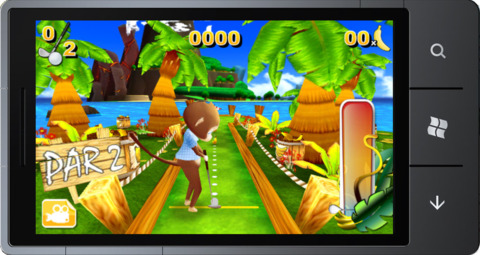Aussie Indie Insights: Ignition Studios
We catch up with a small indie studio in Melbourne to find out how it has turned monkeying around into a full-time job.

While iOS and Android app development is all the rage right now on the local indie scene, few Aussie developers have dabbled with Windows Mobile. The Melbourne-based Ignition Studio is an exception to that rule, opting to choose Microsoft's slow-growing mobile platform for its inaugural release--Monkey Mini Golf. It's been several months now since the arcade sports game first arrived on Windows Mobile, and GameSpot AU was fortunate enough to catch up with Shannon Gilleland, the director and animator at Ignition Studios, to get an idea of what challenges the studio faced while developing Monkey Mini Golf.
Studio: Ignition Studios
Founded: April 2011
Location: Reservoir, Victoria
Team members: Two full-time directors, plus contractors
Current projects: Monkey Mini Golf on WP7 (released); working on bringing Monkey Mini Golf to new platforms; external programming contract for an iPhone game; and prototyping new games.
GameSpot AU: If you had to talk to someone about your game who has never heard of it before, how would you describe it in one paragraph?
Shannon Gilleland: In Monkey Mini Golf, you play as cheeky monkey characters, Mica or Zeb, and spend your time putting around bright and vibrant tropical island courses to collect bananas and challenge your friends through the online leaderboards.
GS AU: What challenges did you face while developing the game?

SG: We had a small team, which meant that we had a core set of skills that narrowed down what we could develop. While one programmer had done iPhone development, the other had not, causing a constraint on the project in terms of skills.
As a new studio, we knew getting exposure for our game was important, but we knew game exposure was an issue that plagued many startup indie developers. Keeping this in mind, we decided to focus our game on the Windows Phone 7 platform, as it wasn't flooded by games and apps like the iPhone and Android markets were. It also meant we weren't competing against thousands of other developers for media exposure and created a unique story for us to tell about our studio.
Due to the technical specifications of the game and being the first time the team had developed a game together, it was inevitable that there would be a blowout in production time.
We highly underestimated the time it would take to develop a 3D game, rather than 2D. However, we were also focused on creating a fully polished game rather than releasing a game that was on schedule with flaws. Through this process, we learned to tighten our project pipeline through the milestones and quality assess to create a successful deliverable project.
GS AU: Bite-sized games are a great way for developers to experiment and try something new. Describe to us something that's unique to your game?
SG: Because our game is a 3D sports game, rather than a 2D platformer, we were able to play around with the in-game camera. We used the mobile phone's accelerometer to allow the player to tilt the phone left and right to look around the character and obstacles that might be in the way. This allowed us to give more visual depth to the game.
We also added in a "time of day" feature, which allowed the game to change the course lighting from sunrise, day, sunset, and night, depending on what time the user's device was set to. This meant the users could play the course at different times without getting visually bored of the game.
Got a news tip or want to contact us directly? Email news@gamespot.com
Join the conversation